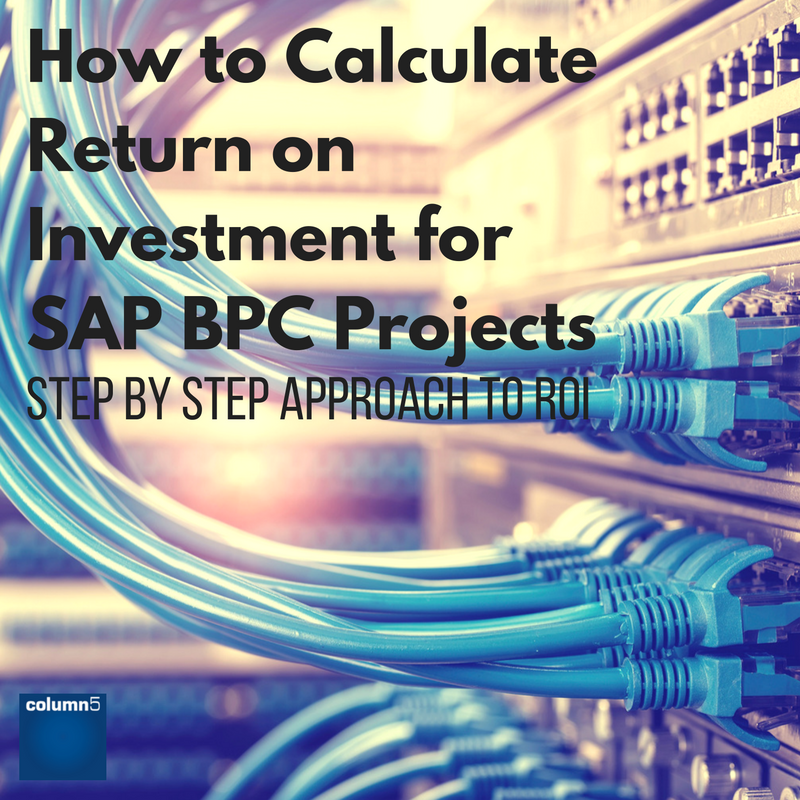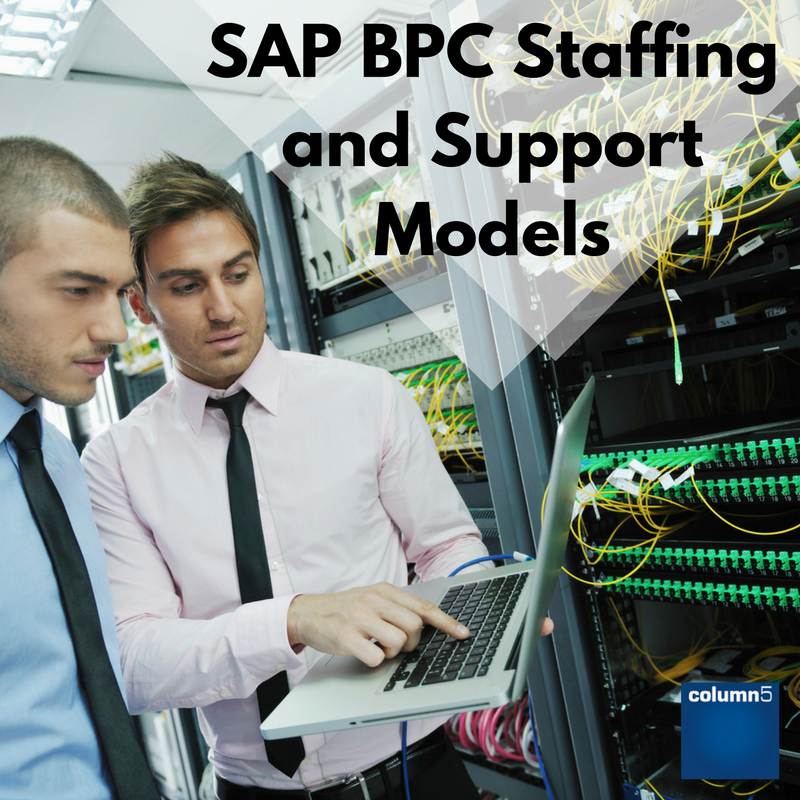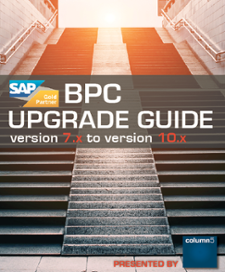Buying an Adequate Level of Service
Column5 offers many solutions and best practice concepts outlined in numerous blogs and webinars with the intent of supporting clients who wish to cultivate an internal capability to best elicit value from their EPM solutions. While all are recommended for our clients, we understand that for many organizations, being in a confident position to properly support their EPM investment is not easily met immediately after go live. We have found some clients looking for assistance with adhering to these best practices, or a little extra bandwidth to supply additional continued support post go-live. In response to these requests, Column5 has assembled a number of services designed to fill any gaps in your EPM deployment plan.
Topics:
Best Practices,
Process Improvement,
EPM Maturity,
Cloud
Since its early OutlookSoft days, BPC has always been touted as a tool that enables finance teams to become independent from IT so they can wield control of the system during crunch time. Fast forward to SAP acquiring BPC, many SAP shops pride themselves on have the internal capabilities to own their systems, period. It isn’t shocking that many of our clients have come ready to meet the challenge of proper care and usage with an internal team. Column5 applauds this approach and has created numerous tools to help your team succeed:
Topics:
Center of Excellence,
Project Management,
Training,
Innovation,
best
We know that EPM (and specifically SAP BPC) implementations have the potential to be very profitable, more so than other IT projects like ERP implementations. But how do you prove that?
This blog takes a step by step approach to building a solid business case for a SAP BPC implementation. There are many intangible benefits to an EPM project which are difficult to put a value to, but we can set out all the costs and calculate a large part of the benefits. Even without adding in the intangible benefits, such as improved data quality, higher management efficiency and faster decision making, BPC projects can still be very profitable projects, so let’s go through the business case elements step by step.
Topics:
Best Practices,
Thought Leadership,
Enterprise Performance Management (EPM),
EPM ROI,
BPC (Business Planning & Consolidation)
Whether you already have an existing BPC environment or are planning a new one, how to appropriately staff and support your EPM environment is a big question to tackle early on. While the number of FTEs will greatly differ based on the size or your organization, the complexities of your planning process, and the level of automation you invest in upfront, there are some basic skillsets you should address.
Topics:
Process Improvement,
Thought Leadership,
Enterprise Performance Management (EPM),
BPC (Business Planning & Consolidation)
SAP BPC systems receive data from a range of external sources. The planning and configuration necessary to insert this data into the system is an important aspect of an implementation. The integrity of data is vital, and invalid data can affect processes within SAP BPC, such as calculations and reporting. Safeguards should be in place to prevent the entry of invalid data.
The main methods employed to enter external data into a SAP BPC system are:
- Interfaces to source systems such as an ERP or SAP BW system.
- Flat file uploads.
- Input schedules for manual data entry.
The first two sources – interfaces and flat files – are tested, configured, and operated by experienced administrators and consultants who understand the data structures of source systems and SAP BPC, so these usually do not create problems. The greatest risk is with data entered through input schedules by users who, whilst knowledgeable about the commercial functions of their organisations, are not experts in the data structures of financial information systems like SAP BPC. The techniques available to ensure the integrity of data entered via input schedules are the focus of this article.
Topics:
Thought Leadership,
Enterprise Performance Management (EPM),
Data,
BPC (Business Planning & Consolidation)
When upgrading to BPC 10.x, many companies are curious about what new features will become available to them. Besides being quicker, more stable, etc., there are three new features that Column5 believes are worth the upgrade.
Topics:
Best Practices,
Thought Leadership,
Enterprise Performance Management (EPM),
Project Management,
EPM 10,
BPC (Business Planning & Consolidation)
A key component of an effective reporting strategy is the ability to get data to users when, where, and how they need it to make better decisions. For many users in today’s technology-driven world, that means mobile devices are a critical part of the overall reporting strategy.
Topics:
Best Practices,
Thought Leadership,
Enterprise Performance Management (EPM),
EPM 10,
BPC (Business Planning & Consolidation)
SAP Business Planning and Consolidation can be a difficult technology to master. Whether you have just begun working with the software, or you are a seasoned veteran, questions are likely to come up that require some additional information or skill to handle. Thankfully, there are a lot of resources for you to get the answers you need. Here are some examples of ways to get the best information and instruction on BPC.
While working with clients to deliver EPM capabilities, we have all heard about how it is critical to have good EPM business processes in place within an organization. I would say that I totally agree with an earlier Column5 blog post, “The Process is King”. Clearly documented business process models assist organizations to align operations to their strategy, promote better communication, improve existing practices, establish control and consistency, and even gain competitive advantage.
Topics:
Best Practices,
Process Improvement,
Thought Leadership,
Enterprise Performance Management (EPM),
BPC (Business Planning & Consolidation)
Column5 CEO David Den Boer once told me, “Behind every checklist there is a dead body. “ As a military veteran, he knew that safety procedures were often put in place in the aftermath of a tragic accident that unfortunately involved the loss of life. The military is well known for their rigor, strict definition of procedures, and processes that deliver consistent and repeatable results. Isn’t that what we all strive for in delivery of our EPM projects? You can accomplish this result without enduring fatalities along the way.
Topics:
Best Practices,
Enterprise Performance Management (EPM),
Project Management,
BPC (Business Planning & Consolidation)



















